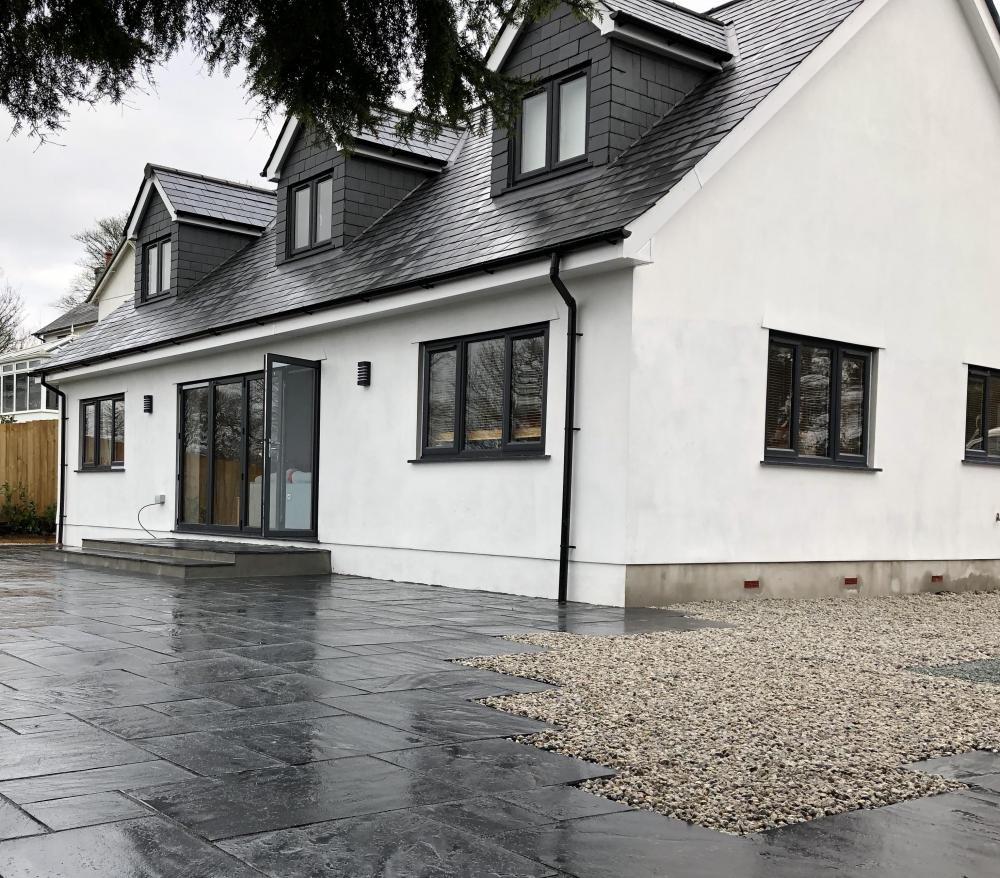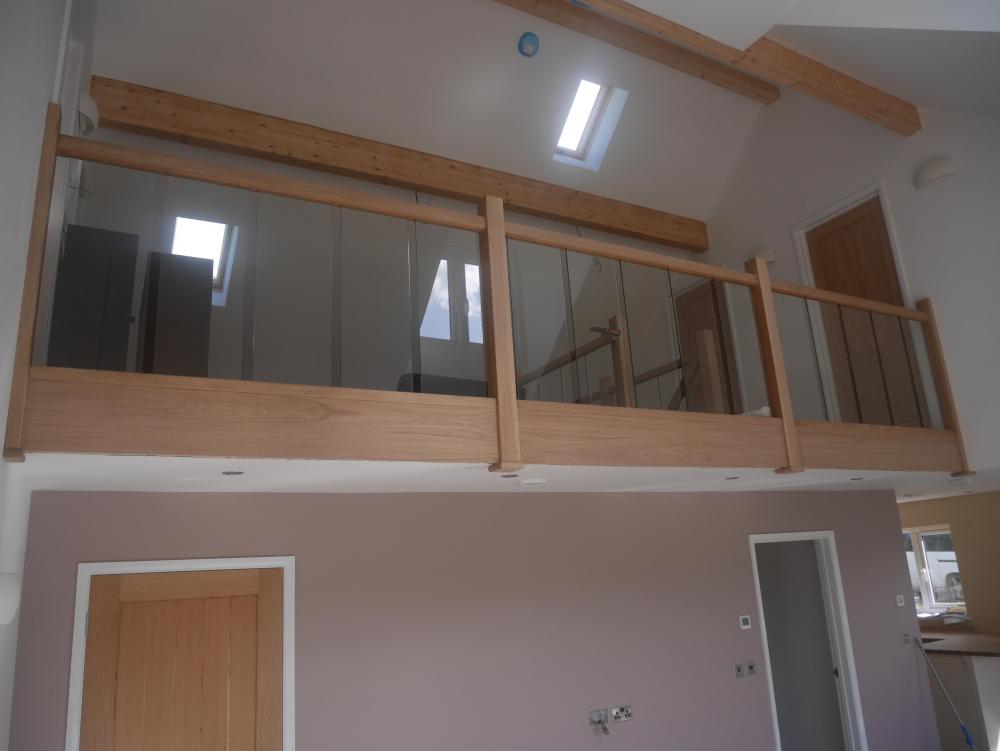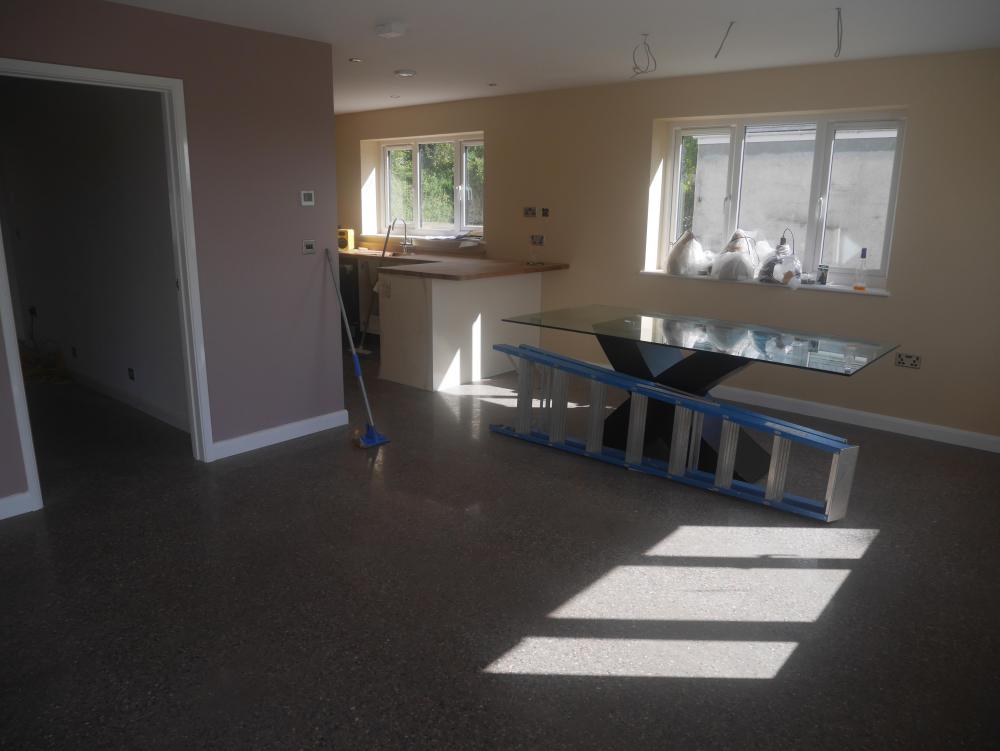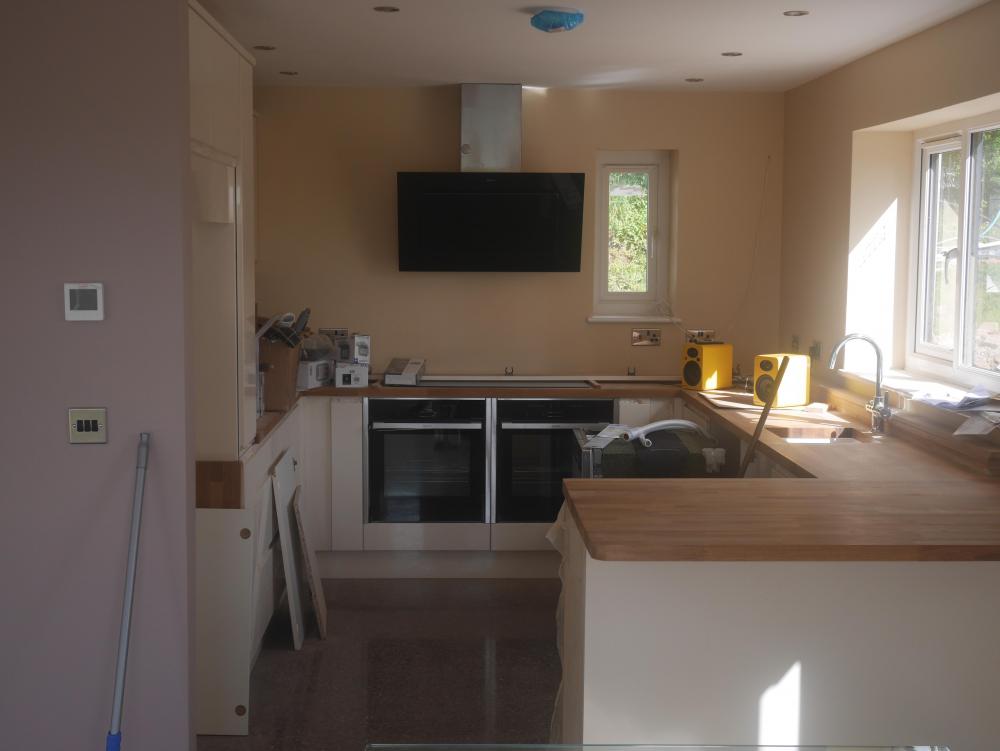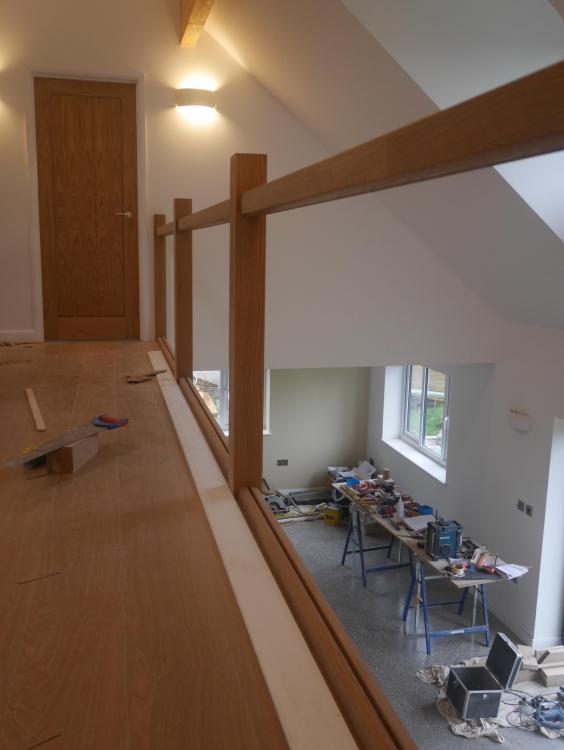
Buster
Members-
Posts
18 -
Joined
-
Last visited
Personal Information
-
Location
Devon
Recent Profile Visitors
The recent visitors block is disabled and is not being shown to other users.
Buster's Achievements

Member (3/5)
3
Reputation
-
More conditions and hopeful removal of them !
Buster replied to Buster's topic in Planning Permission
Thanks all for your help and advice @lizzie many thanks for highlighting the previous appeal, after complaints as expected from the bitter neighbours we had a site visit. pleased to say the condition was removed so full PD reinstated! £250 well spent -
Removal of conditions but same condition on different plans?
Buster replied to Buster's topic in Planning Permission
Well time is up decision will be made by next Friday met the planning officer today she seemed nice so fingers crossed. -
I bet you are well pleased you have Beautiful build in a beautiful setting. here’s is a couple of ours from the early days people love the open plan aspect looking up!
-
Is your lounge open plan vaulted ceiling looking up to landing?
-
Removal of conditions but same condition on different plans?
Buster replied to Buster's topic in Planning Permission
Thanks yes the most recent one was the answer finally got an answer from planning -
Off topic but house looks great, and really similar plan to ours! if it’s anything like ours you won’t need the stove! Wife wanted one but we would never use it it’s like a sauna in here
-
Removal of conditions but same condition on different plans?
Buster replied to Buster's topic in Planning Permission
My build finished 2 years ago on the original plan in 2015 there was removal of pd rights during the build we varied a condition that was about use of garage as a workshop, as we had to submit an app for this it was granted but the conditions from the original pp were copied over. so now 2 years later I’m after removal of a condition on the original pp but it also appears on the subsequent variation application. when I referenced these I was told which one do I want to challenge as I can’t do both on one application. does this mean I need to pay £250 again to list the same. Condition separately? or would a removal on the original plan permission null the later one? -
Removal of conditions but same condition on different plans?
Buster replied to Buster's topic in Planning Permission
Yup thanks I quoted it and put 213/215 cond 4. And 983/216 condition 3, they are the exact same condition. the second just appeared on a variation of a condition application, pointless really it just copied all the conditions of the original pp. -
So as discussed on earlier thread I have put my planning application in to remove a single condition on my new build. the problem is it was condition 4 on my original permission, when I requested a variation on another condition which was approved the same condition appeared as condition 3. if that makes sense so yesterday when I applied for removal of condition i put condition 3 on planning number ,,,,,,, and condition 4 on planning number ,,,,,,, today recieved an email asking which one I wanted to remove as both can’t be on one application, even though it’s the same condition? so do I really have to submit another or just mention the original permission which will then knock on to the one after? nothing is ever simple in planning!
-
Shower tray too short, any suggestions?
Buster replied to Moira Niedzwiecka's topic in General Self Build & DIY Discussion
Perhaps small battens it and use a showerboard panel on that wall? -
More conditions and hopeful removal of them !
Buster replied to Buster's topic in Planning Permission
I think this this will be my plan! just been on the planning portal and looks like it will incur a £234 charge got to be worth that. how do you read this exemption? Is the application for alternative proposals for the same site by the same applicant, in order to benefit from the permitted development right in Schedule 2 Part 3 Class V of the Town and Country Planning (General Permitted Development) Order 2015? if I could tick that box it would be free ! -
More conditions and hopeful removal of them !
Buster replied to Buster's topic in Planning Permission
This mornings homework! When is it appropriate to use article 4 directions? The use of article 4 directions to remove national permitted development rights should be limited to situations where this is necessary to protect local amenity or the wellbeing of the area. The potential harm that the direction is intended to address should be clearly identified. There should be a particularly strong justification for the withdrawal of permitted development rights relating to: a wide area (eg those covering the entire area of a local planning authority, National Park or Area of Outstanding National Beauty) agriculture and forestry development. Article 4 directions related to agriculture and forestry will need to demonstrate that permitted development rights pose a serious threat to areas or landscapes of exceptional beauty cases where prior approval powers are available to control permitted development leisure plots and uses the installation of microgeneration Six tests for conditions 14. On a number of occasions the courts have laid down the general criteria for the validity of planning conditions. In addition to satisfying the court's criteria for validity, the Secretaries of State take the view that conditions should not be imposed unless they are both necessary and effective, and do not place unjustifiable burdens on applicants. As a matter of policy, conditions should only be imposed where they satisfy all of the tests described in paragraphs 14-42. In brief, these explain that conditions should be i. necessary; ii. relevant to planning; iii. relevant to the development to be permitted; iv. enforceable; v. precise; and vi. reasonable in all other respects. Need for a Condition 15. In considering whether a particular condition is necessary, authorities should ask themselves whether planning permission would have to be refused if that condition were not to be imposed. If it would not, then the condition needs special and precise justification. The argument that a condition will do no harm is no justification for its imposition: as a matter of policy, a condition ought not to be imposed unless there is a definite need for it. The same principles, of course, must be applied in dealing with applications for the removal of a condition under section 73 or section 73A: a condition should not be retained unless there are sound and clear-cut reasons for doing so. 16. In some cases a condition is clearly unnecessary, such as where it would repeat provisions in another condition imposed on the same permission. In other cases the lack of need may be less obvious, and it may help to ask whether it would be considered expedient to enforce against a breach-if not, then the condition may well be unnecessary. Conditions Restricting Permitted Development or Otherwise Restricting Use Restrictions on use or permitted development 86. It is possible, exceptionally, to impose conditions to restrict further development which would normally be permitted by a development order, or to restrict changes of use which would not be regarded as development (whether because the change is not a "material" change within the terms of section 55(1) of the Act, or by reason of section 55(2) and the provisions of the Town and Country Planning (Use Classes) Order 1987) (SI 1987/764). Changes of use can be restricted either by prohibiting any change from the use permitted or by precluding specific alternative uses (see model conditions 48--49). It should be noted, however, that a condition restricting changes of use will not restrict ancillary or incidental activities unless it so specifies (see paragraph 91 below). Similarly, a general condition which restricts the use of land does not remove permitted development rights for that use unless the condition specifically removes those rights as well. Presumption against such restrictions 87. Both development orders and the Use Classes Order, however, are designed to give or confirm a freedom from detailed control which will be acceptable in the great majority of cases. Save in exceptional circumstances, conditions should not be imposed which restrict either permitted development rights granted by development orders or future changes of use which the Use Classes Order would otherwise allow. The Secretaries of State would regard such conditions as unreasonable unless there were clear evidence that the uses excluded would have serious adverse effects on amenity or the environment, that there were no other forms of control, and that the condition would serve a clear planning purpose. 88. It might, for example, be possible to justify imposing a condition restricting permitted development rights allowed by Part 2, Class A, of Schedule 2 to the Town and Country Planning (General Permitted Development) Order 1995 so as to preserve an exceptionally attractive open plan estate free of fences, or under Part 1, Class A of the General Permitted Development Order so as to avoid overdevelopment by extensions to dwellinghouses in an area of housing at unusually high density; or restricting changes of use so as to prevent the use of large retail premises as a food or convenience goods supermarket where such a use might generate an unacceptable level of additional traffic or have a damaging effect on the vitality of a nearby town centre; or so as to limit the storage of hazardous substances in a warehouse. Specific conditions better than general ones 89. Because of the general presumption against such restrictions on permitted development or on changes of use which are not development, it will always be necessary to look carefully at the planning reasons for any restriction, and to ensure that the condition imposed is no more onerous than can be justified (it may be helpful to refer to paragraph 36 above). It would not be right to use a condition restricting uses where an alternative, more specific, condition would achieve the same end (for example, where it is necessary to restrict the volume of noise emitted from an industrial site, and a condition addressing the problem expressly can be used-see model conditions 6-11 -that condition should be imposed, rather than one restricting the permitted uses). Scrupulous care in the giving of proper, adequate and intelligible reasons for imposing conditions (see paragraph 10 above) can help authorities to ensure that the conditions they impose are not more onerous than is necessary to achieve their objective. 90. It will be preferable if a condition designed to restrict changes of use can be drafted so as to prohibit a change to a particular unacceptable use or uses, as in model condition 49 (provided the list does not become too long), rather than in terms which prevent any change of use at all; but in many cases a condition confining the use to the use permitted may be necessary (model condition 48). In appropriate circumstances, it might be reasonable to impose a condition limiting the intensification of use of small office or industrial buildings where intensification beyond a certain point would generate traffic and/or parking problems. Conditions designed to prevent the primary use of an office building being changed to use as shops are unnecessary, as such a change would involve a material change of use amounting to development of the land and thus would require planning permission in any event. -
More conditions and hopeful removal of them !
Buster replied to Buster's topic in Planning Permission
Also @lizzie would love the planning reference for the above! -
More conditions and hopeful removal of them !
Buster replied to Buster's topic in Planning Permission
Thanks Lizzie yes my reading leads me to believe that 6 conditions need to be solidly met in order to remove PD in my case I dont believe they have been so will be looking really hard for any other cases or evidence to support this. -
More conditions and hopeful removal of them !
Buster replied to Buster's topic in Planning Permission
As above we use the moveable clause to our advantage! however I’m leaning towards having a go for removal simply because of the individual situation, ie large plot huge garden, the house is smaller than the surrounding ones. im tempted to approach a planning consultant who’s local expertise may prove invaluable. reading loads on section 73 and can’t really see that the specific 6 points are all ticked !

